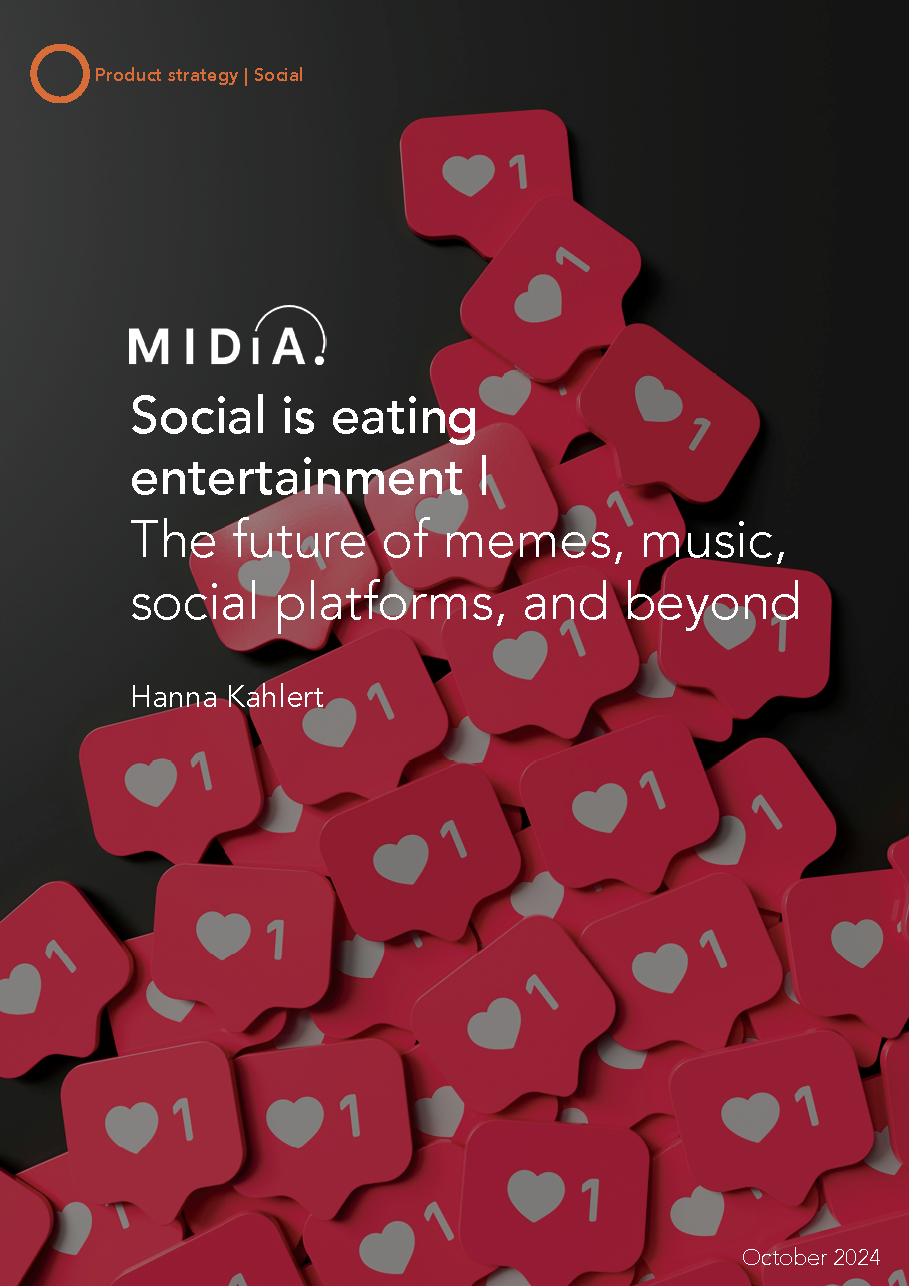
Hanna Kahlert
Browse all of our reports, featuring our analysts' expert insights and analysis of audience segmentation, emerging trends and technologies, value chains, market shares, predictions and more – backed by our proprietary survey data and bespoke models & forecasts. Become a subscriber to get new ones every month, or just pick one to get started.

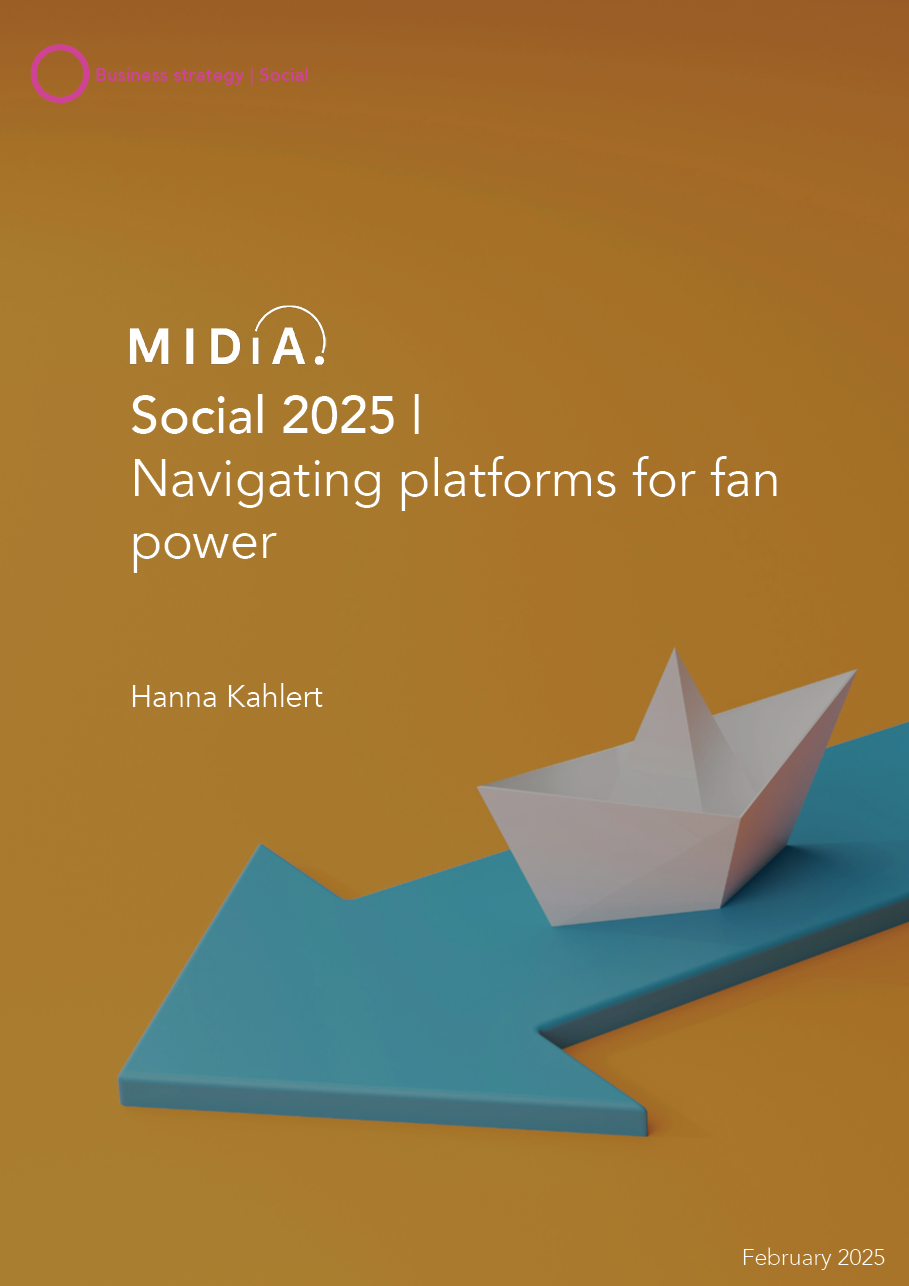
Social 2025 Navigating platforms for fan power
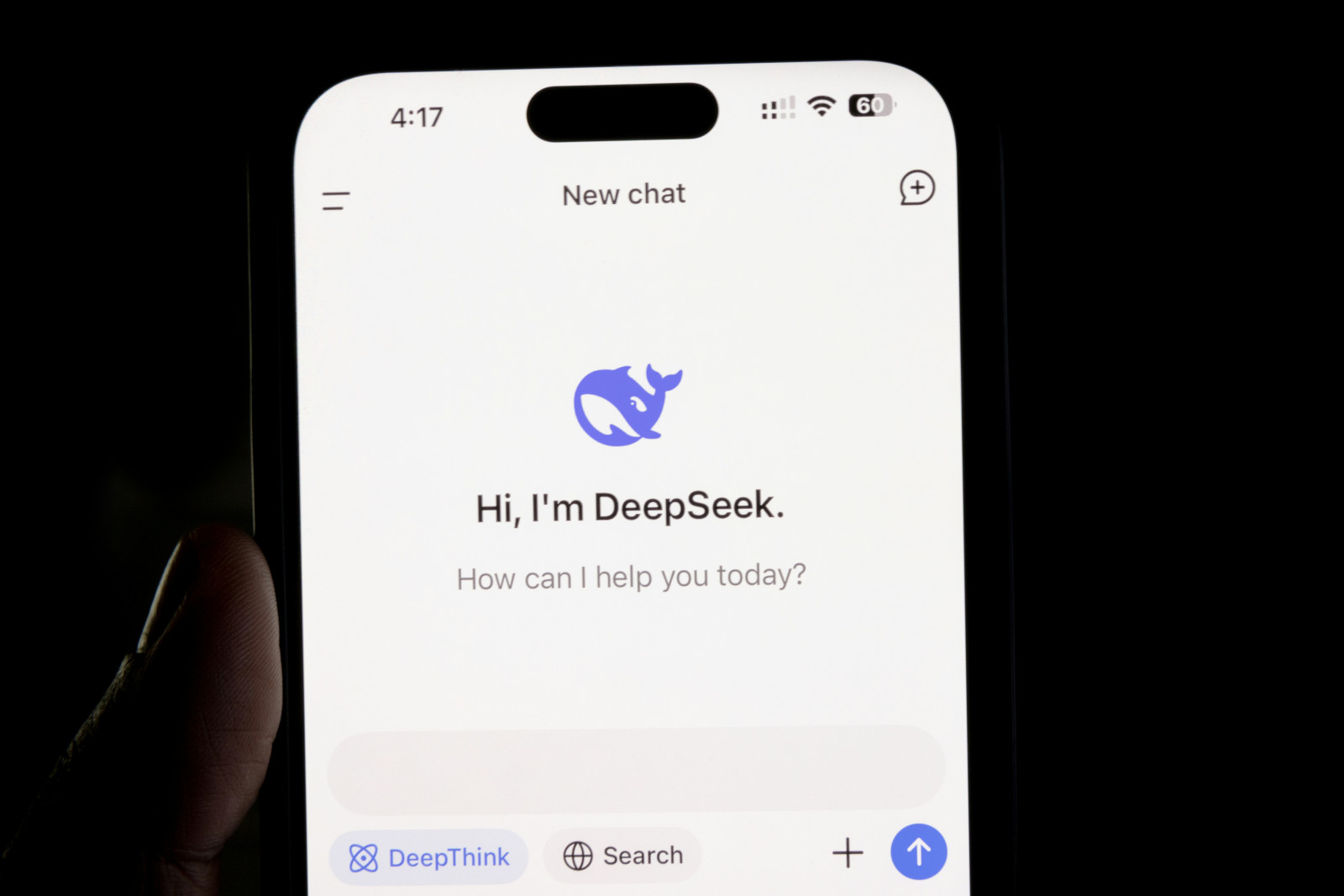
DeepSeek and Rednote signal the dawning era of APAC

Creators and the creator economy Defining the undefinable

Ban or no ban, what comes next for TikTok creators?

Meta pushes for “free speech” as TikTok falls short: a dramatic cultural shift for social

Musk calls UK government ‘tyrannical’ and TikTok could leave the US: is global culture going regional again?
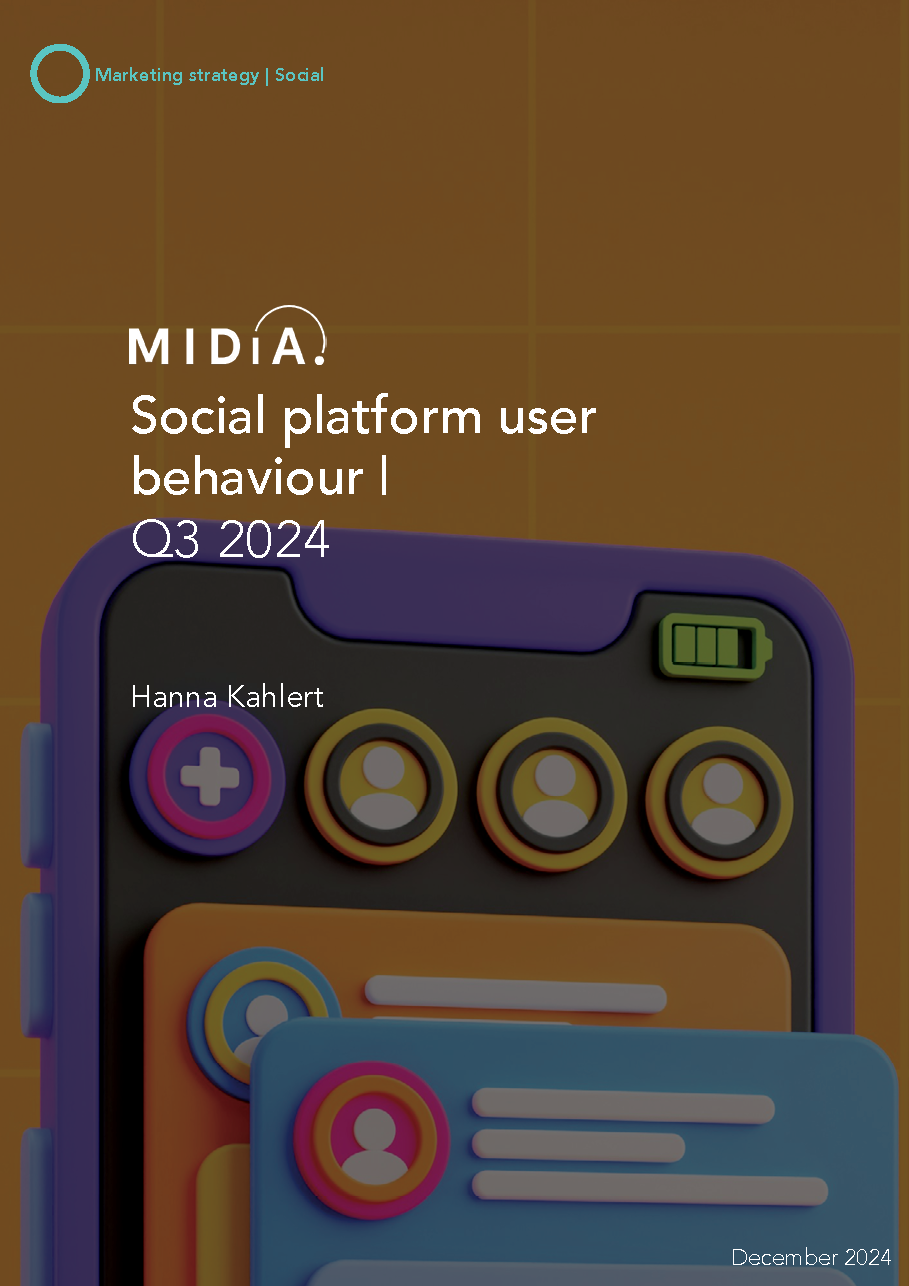
Social platform user behaviour Q3 2024

A regulation-heavy year for social looms in 2025
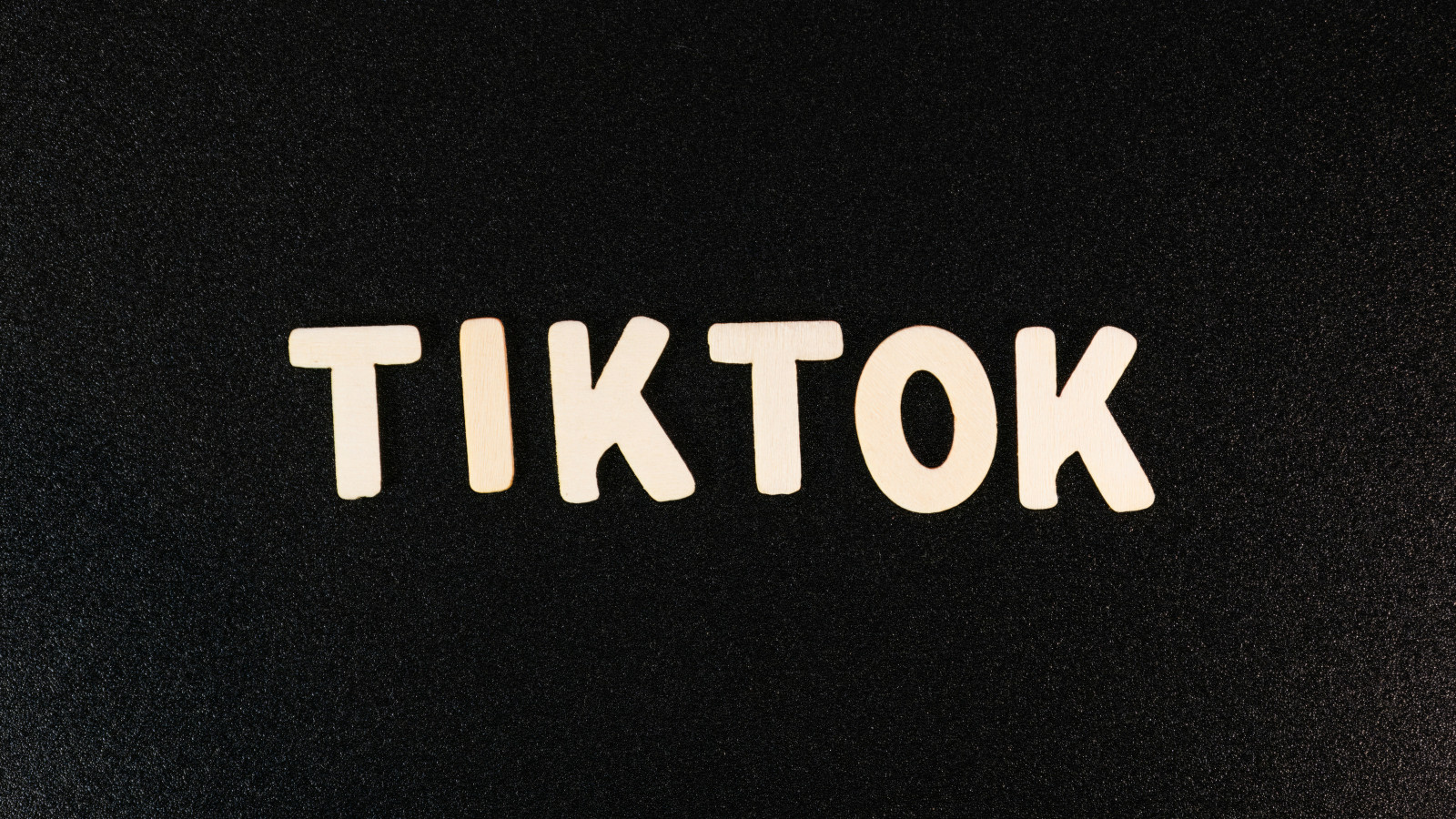
Will the TikTok ban happen? What you need to know
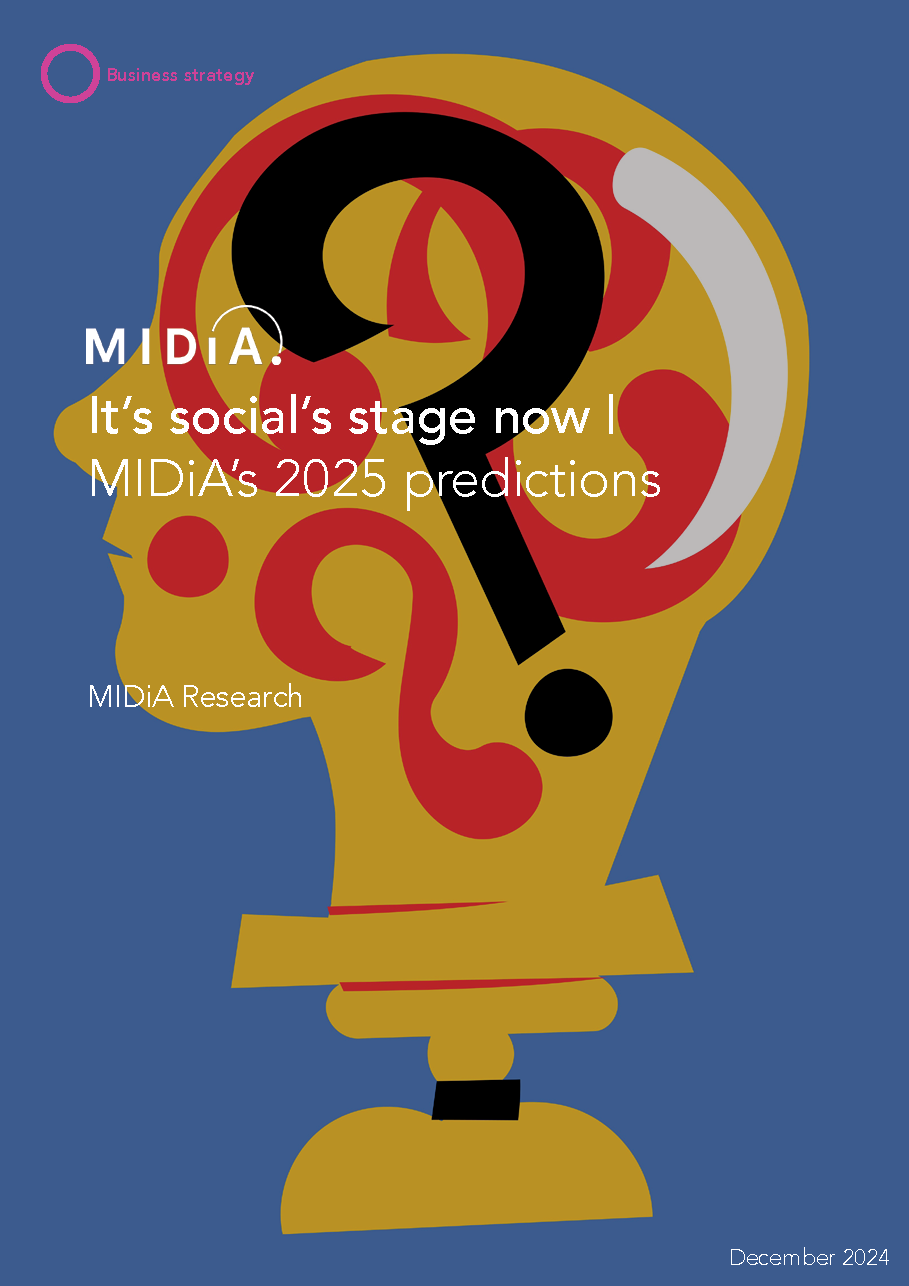
MIDiA’s 2025 predictions It’s social’s stage now

Australia bans social media for under-16s: the first domino towards a new digital world?

Why social media regulation could be a boost for the creator economy

The BlueSky migration: How cultural shifts can disrupt even the most established social media platforms
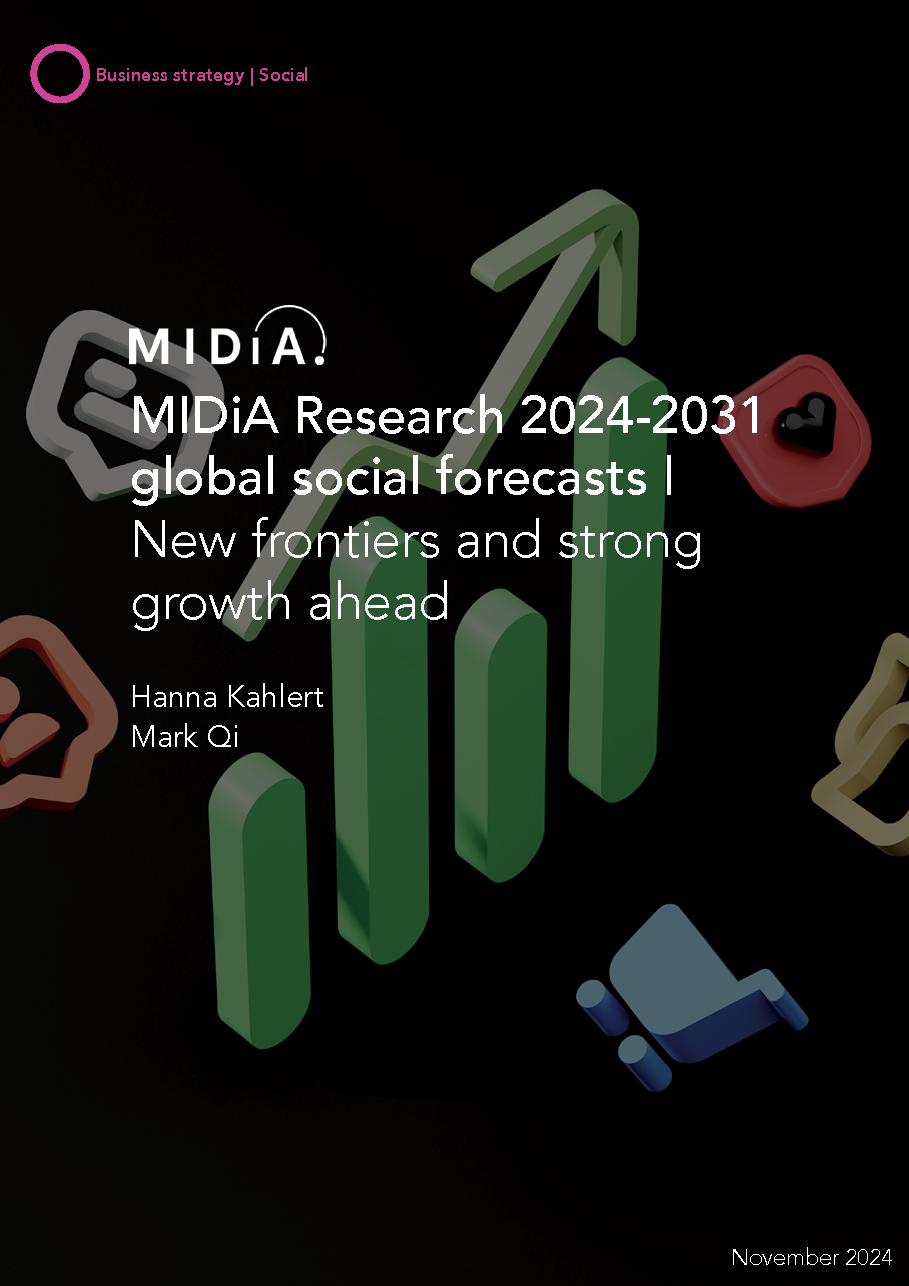
MIDiA Research 2024-2031 global social forecasts New frontiers and strong growth ahead

Info-tainment, Kamala’s campaign failure, and the distortive role of social media marketing

Two years into the AI craze, where does it go next?

Ofcom, Elon Musk, and the future of the social platform marketplace
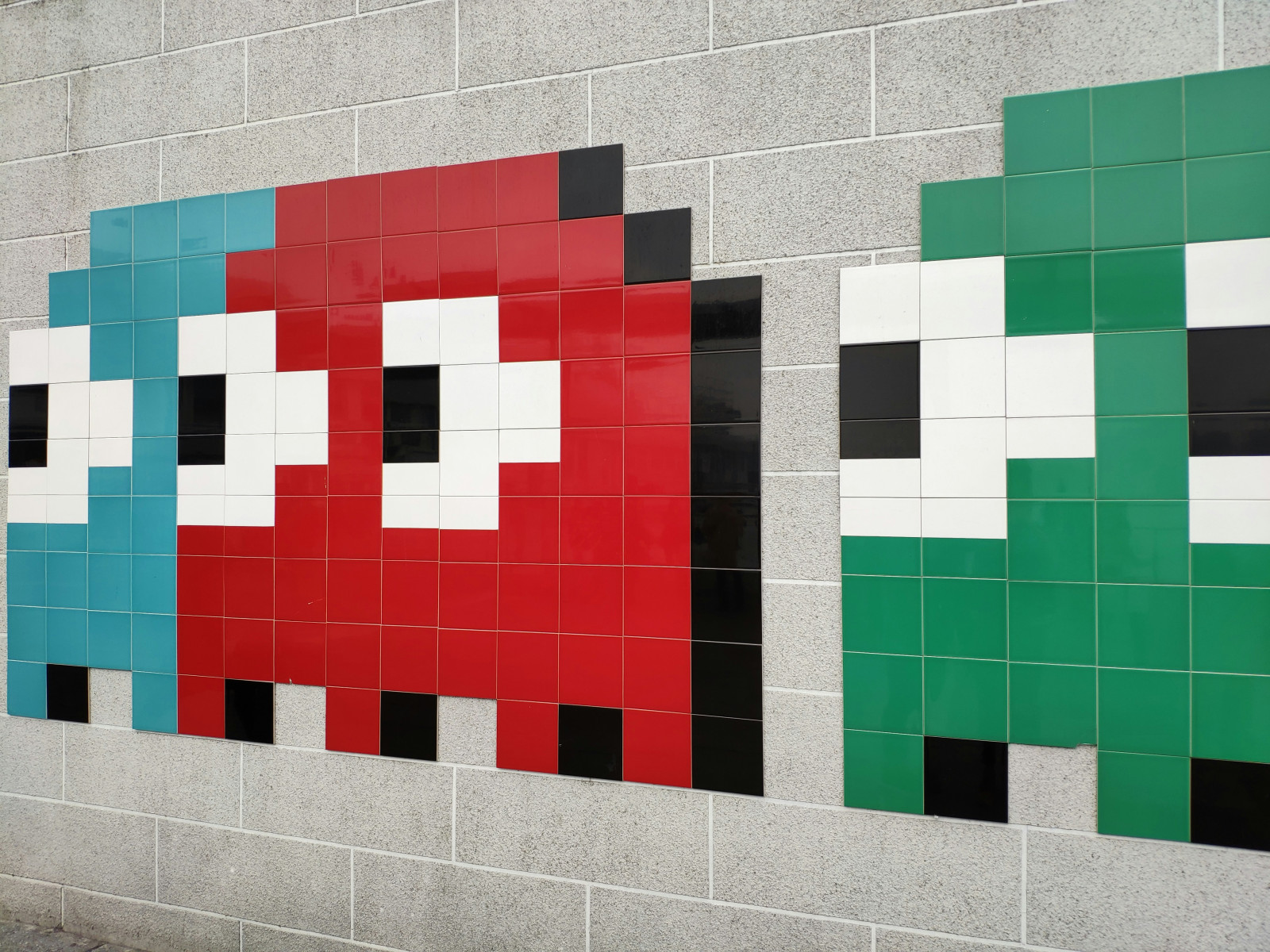
Social platforms are eating passive entertainment. Are games eating social?
